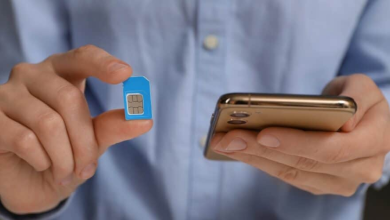High-Quality Garage Floor Resurfacing Near Me – Free Estimates

A garage floor takes on a lot of wear and tear over the years. From vehicle traffic and heavy equipment to oil spills and temperature changes, concrete surfaces eventually crack, stain, or lose their smooth finish. If you’ve been searching for garage floor resurfacing near me, you’re likely looking for a solution that restores both the durability and appearance of your floor. Professional resurfacing not only improves functionality but also enhances the overall look of your garage, making it a valuable investment for homeowners.
What Is Garage Floor Resurfacing?
Garage floor resurfacing is the process of repairing and restoring damaged or worn-out concrete by applying a new layer of coating or overlay. Unlike a full replacement, resurfacing is cost-effective and efficient, breathing new life into an old floor without tearing out the entire slab.
Resurfacing can include patching cracks, leveling uneven areas, and applying protective finishes such as epoxy, polyaspartic, or decorative coatings. The result is a smooth, durable, and attractive surface that’s built to last.
Benefits of Professional Garage Floor Resurfacing
When homeowners turn to garage floor resurfacing near me, they’re often seeking more than just cosmetic upgrades. Here are the top benefits of choosing a professional service:
1. Enhanced Durability
A properly resurfaced garage floor can withstand heavy loads, dropped tools, and regular vehicle traffic. High-quality coatings protect against cracks and chipping, ensuring your floor lasts for years.
2. Resistance to Stains and Spills
Bare concrete is porous, making it prone to absorbing oil, grease, and other automotive fluids. Resurfacing seals the surface, making cleanup quick and easy.
3. Improved Appearance
Resurfacing transforms dull, damaged concrete into a polished, attractive surface. Homeowners can choose from a variety of finishes, including epoxy, decorative flakes, or even custom colors to match the style of their home.
4. Increased Safety
Resurfaced floors can be made slip-resistant, reducing the risk of accidents caused by water, snow, or spilled liquids.
5. Cost-Effective Solution
Compared to replacing an entire garage floor, resurfacing offers a much more affordable option while still delivering long-lasting results.
6. Boosted Property Value
A clean, durable garage floor adds to your home’s appeal and can increase resale value. Potential buyers are more likely to appreciate a well-maintained garage that’s both functional and attractive.
Signs You Need Garage Floor Resurfacing
If you’re unsure whether it’s time to search for garage floor resurfacing near me, here are some clear signs that your concrete floor may benefit from professional attention:
- Visible cracks or chips that continue to expand.
- Stains and discoloration that won’t go away, even after cleaning.
- Uneven or rough surfaces that create tripping hazards.
- Dusty concrete that sheds particles and makes the garage messy.
- Water pooling in low spots after rain or cleaning.
Addressing these issues early with resurfacing can prevent further damage and extend the life of your garage floor.
The Process of Garage Floor Resurfacing
Understanding what to expect from a resurfacing project helps homeowners make informed decisions. While each contractor may have a slightly different process, the general steps include:
- Inspection and preparation: The floor is thoroughly cleaned, and any grease, oil, or debris is removed. Damaged areas are inspected for structural issues.
- Repairing cracks and holes: Small cracks and imperfections are filled with repair compounds.
- Leveling and smoothing: The surface is prepared to ensure a strong bond with the new coating.
- Application of coating or overlay: Depending on your choice, epoxy, polyaspartic, or decorative finishes are applied.
- Sealing and curing: The floor is sealed for durability and left to cure, ensuring maximum strength.
The entire process is typically completed in just a few days, minimizing disruption to your daily routine.
Choosing the Right Contractor
When you search for garage floor resurfacing near me, you’ll likely find many local providers. Selecting the right contractor is essential for quality results. Here’s what to look for:
- Experience: Contractors with years of experience in resurfacing know how to handle different concrete conditions.
- Materials used: Ensure they use high-quality, long-lasting coatings.
- Portfolio and reviews: Look for before-and-after photos and customer testimonials.
- Transparent pricing: Free estimates with clear breakdowns of costs help avoid surprises.
- Warranty: A reputable contractor should stand behind their work.
Maintenance Tips After Resurfacing
A resurfaced garage floor is built to last, but simple care can extend its lifespan:
- Sweep or vacuum regularly to remove dirt and debris.
- Wipe spills quickly to prevent staining.
- Use a mild cleaner and mop for deeper cleaning.
- Avoid dragging heavy, sharp objects across the surface.
- Place mats at entry points to reduce tracked-in dirt.
By following these tips, you’ll keep your garage floor looking great for years to come.
Conclusion
If your garage floor has seen better days, it may be time to consider professional garage floor resurfacing near me. Resurfacing offers a cost-effective way to repair damage, improve appearance, and add years of durability to your concrete surface. With free estimates available from local experts, homeowners can explore their options and find a solution that fits their needs and budget.
Investing in high-quality resurfacing not only makes your garage more functional but also enhances the value and appeal of your entire home.



